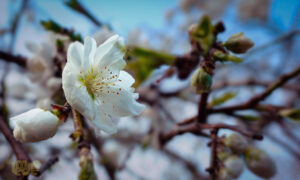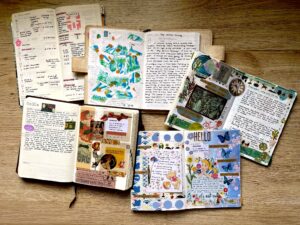2023 saw the commemoration of 50 years of Japan and ASEAN friendship. In that span of time, many aspects of culture have been shared between Japan and the Philippines, in art, music, film, food, and many more. Through graphic design and illustration, we asked JFM’s SNS followers their vision of Japanese and Philippine friendship now and for the future years to come.
Here are some of the art and thoughts that they have shared:
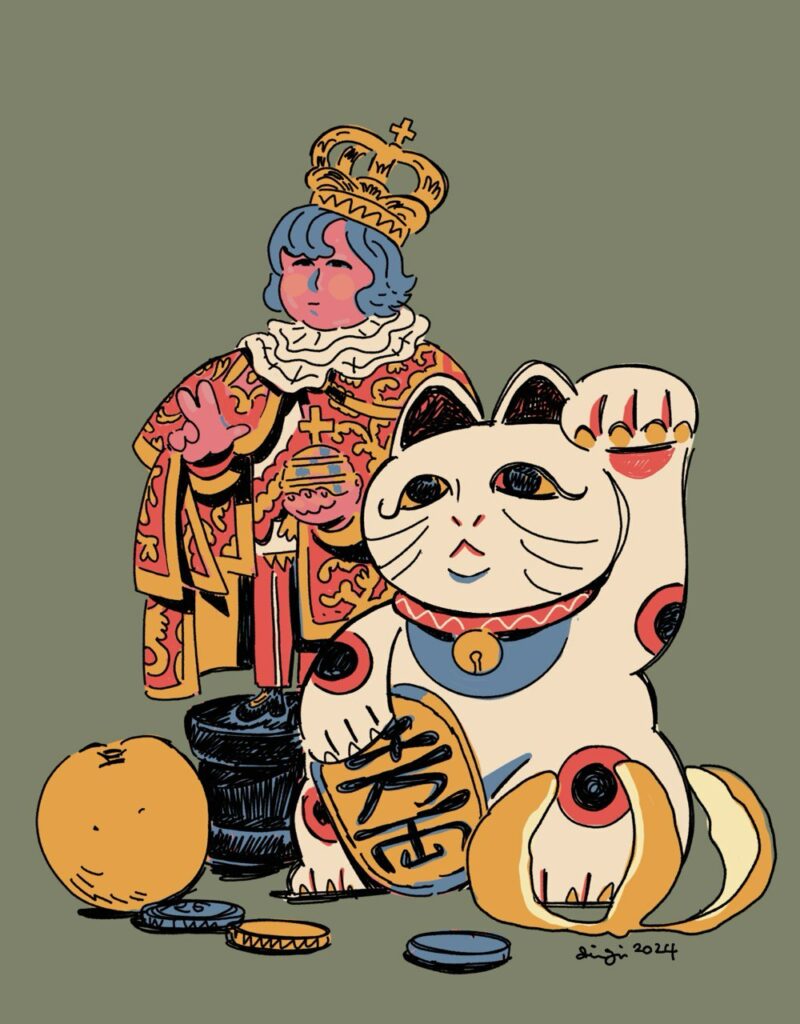
DIIGII DAGUNA
When I heard about the theme I had easily thought about this idea since it was something I’ve seen every day.
In storefronts, food carts, and even houses. Many Filipinos and Japanese people would have had something similar tucked in the corner of their everyday spaces.
There’s usually this mentality that Filipinos have that they automatically compare their differences to others when they go abroad. Whether or not it’s healthy remains to be seen, but I find that we have more things in common than differences at the end of the day.
Seeing a physical reminder that we all hope for good things, by decorating our spaces with objects like a small Santo Nino or a Maneki Neko, tells us that we have more in common than we thought, and that we share the same brand of optimism for the future. Hopefully, these similarities will be able to unite us in the coming years.
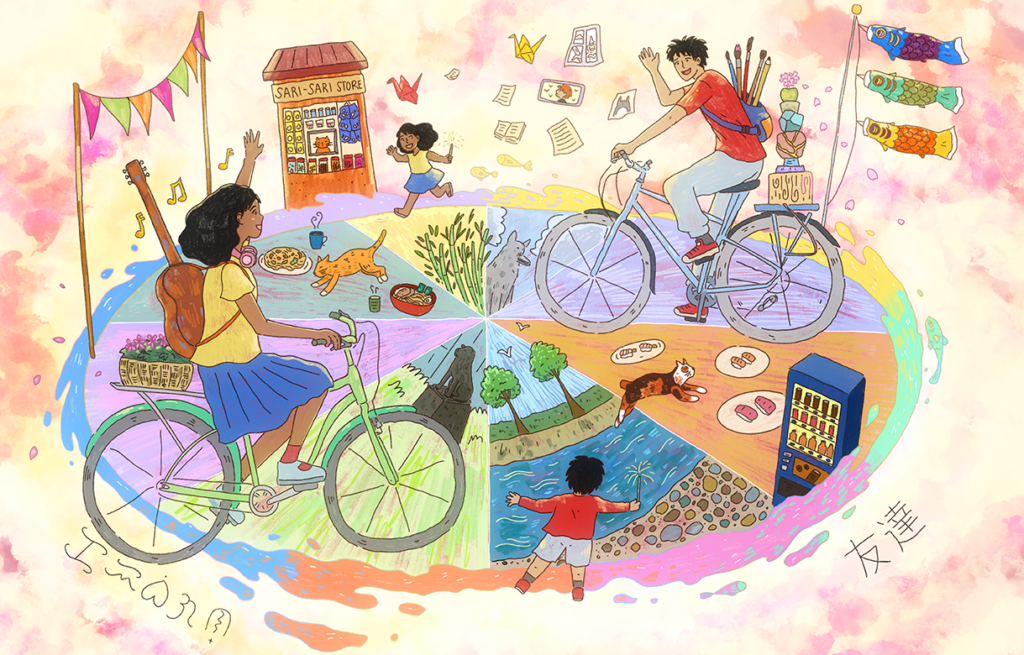
ARLI PAGADUAN
Slice of life—my favorite anime and manga genre.
I drew inspiration from it for this illustration, so I thought of a cake. However, when I was drawing the cake slices, I realized that it can also double as a bicycle wheel, a mode of transport regularly used in the Philippines and Japan! The circle shape has no beginning nor end, and it reminds us that to stay on the bike, one must ‘keep going.’
To further illustrate this slice of life concept, I wanted to focus on people and some parallels in the two worlds.
I illustrated two friends: a little boy from Japan who becomes friends with a little girl from the Philippines. They both have big dreams that they’ve shared with each other!
Through the years, they kept contact, and soon, the boy became an artist, and the girl became a songwriter. They continue to inspire each other to be the best versions of themselves and to keep chasing their dreams. Who knows—they could collaborate on a creative project together!
Friendship happens between two people first, and because they have been inspired by each others’ culture and dreams, they create communities and strengthen the bond they have for one another. It is only through the genuine interest, efforts, and time spent to grow with each other that true friendships can blossom and be sustained through time. Not just in spring, but always.
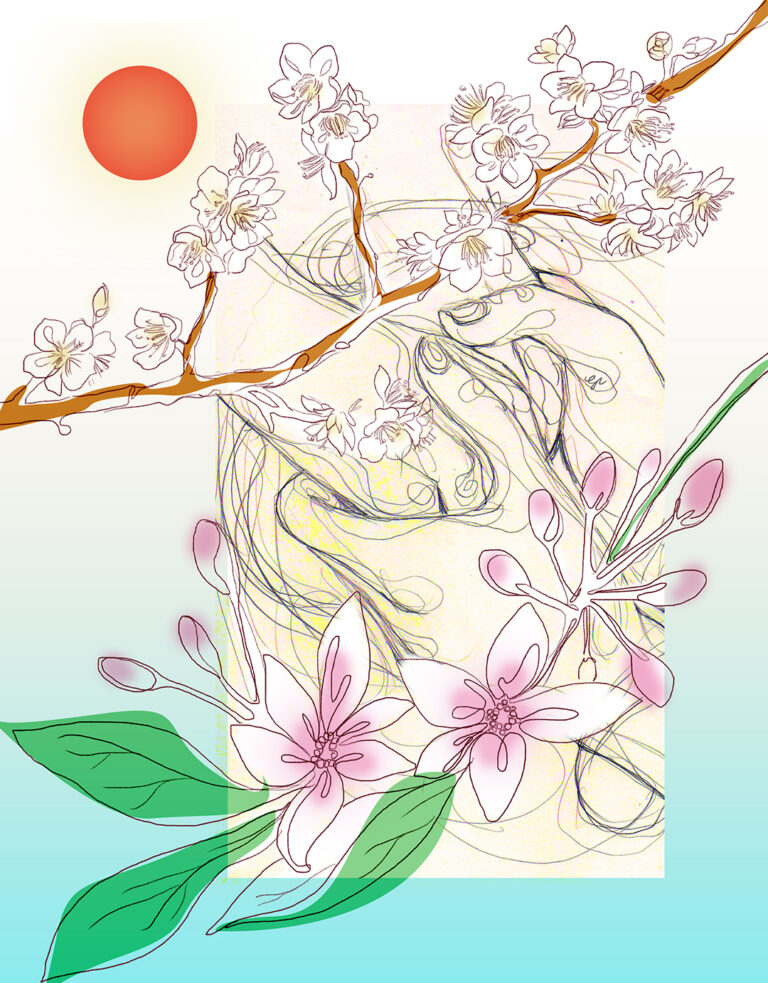
GIELIZZA MARIE CALZADO
Cherry blossoms and aunasin are flowering trees native to Japan and the Philippines respectively. This illustrative collage is meant to remind us that despite our cultural differences, ongoing national issues and plights, we will flourish as long as we walk and grow through them hand in hand, together. The next 100 years already look promising, much like the sakura and aunasin buds that are blooming.
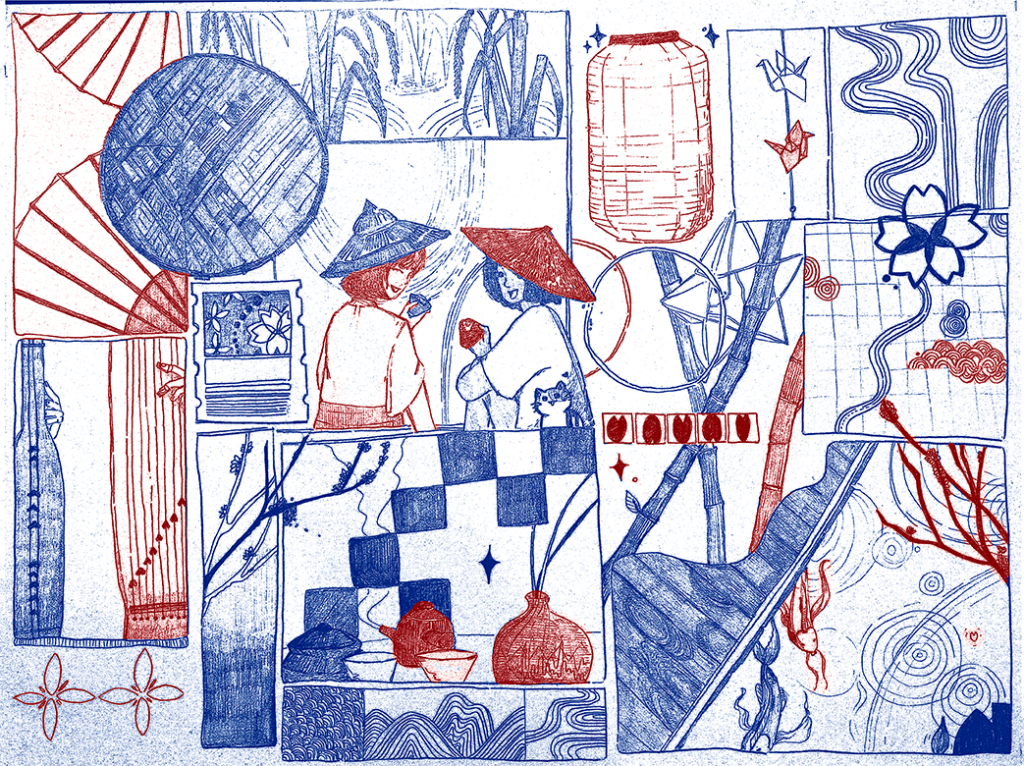
CAMILLE DESAMERO
I named the artwork HANA-BI.
HANA-BI is a wordplay for the word hana (flower) and bi (Japanese: beauty; English: two) – which, when combined, sounds like the Filipino word hinabi (woven). It also could sound like the Japanese word hanabi (fireworks).
I envision the future of the friendship between Japanese and Filipinos (Japan and the Philippines) to be like
what I have mentioned earlier: blooming, beautiful, intertwining, and exciting.
As the past and the present weave, we become aware that both countries influence one another. We see it in artistic means, economically, and even culturally. We also become aware of our similarities — which turns into sturdy bridges. These similarities include how we value hard work, being resilient like bamboo against strong winds, and appreciation of life, harmony in the strings of friendships, and meaningful discourse.
I see that instead of inevitably losing individuality due to globalization caused by these bridges built, we will complement one another. Our identities will be enhanced with our countries providing each other with enlightening wisdom (like lanterns and stars) that each country holds – which, in turn, the lines and details of our identities become more apparent. And, as we see each other’s uniqueness and beauty individually, we will also be able to see spaces in which we can grow and improve in.
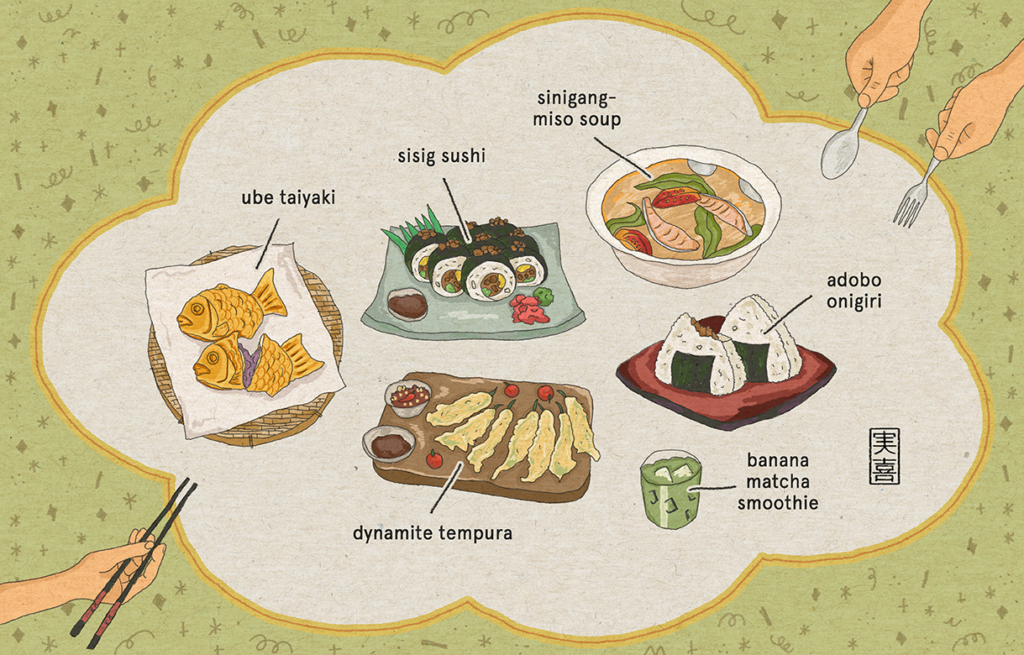
MIKI YOBEL TOLENTINO
The fusion of Filipino and Japanese cuisine is an exciting blend that combines the bold flavors and techniques of Filipino cooking with the fresh, delicate flavors, and presentation of Japanese cuisine. This fusion has become increasingly popular in recent years in both countries and around the world. My illustration features some of these Filipino-Japanese fusion dishes such as sisig sushi, ube taiyaki, and adobo onigiri. Japanese and Philippine friendship for the future years to come would be filled with fusions, not only in food, but also in art, music, film, and many more.
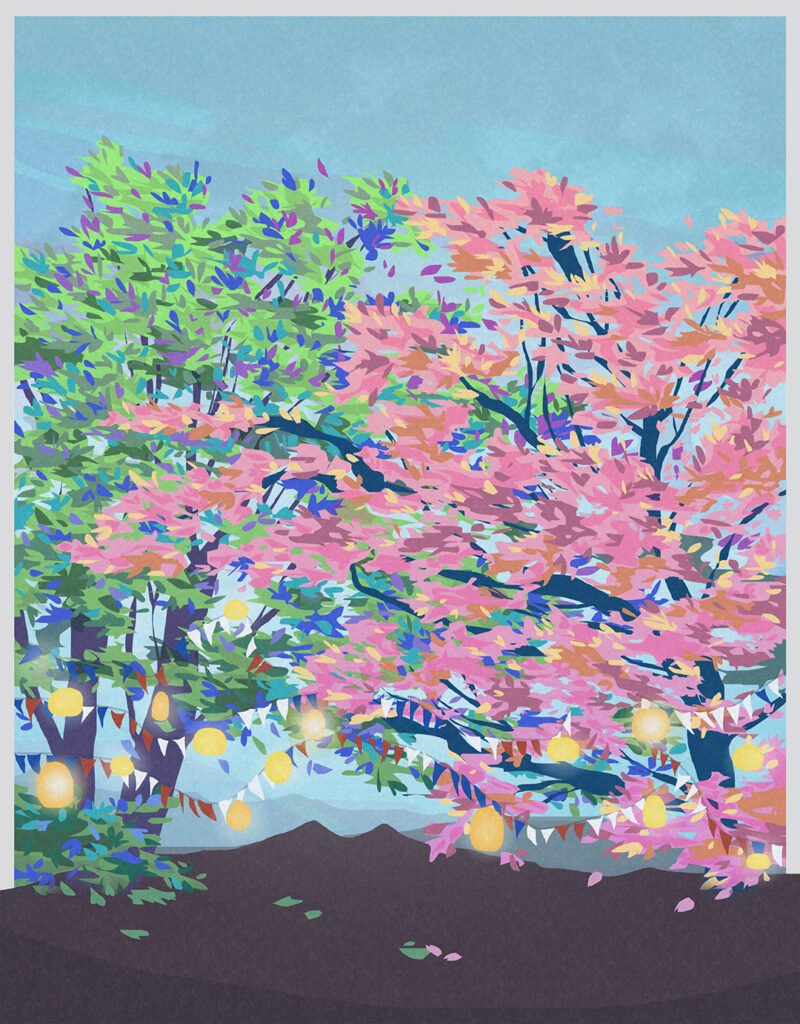
KAI PILUDEN
My vision of Japanese and Philippine friendship is focused on conserving and protecting the environment through art and innovation. The cherry blossom tree and lanterns represent Japan, while the narra tree and banderitas represent the Philippines. The banderitas and lanterns are in colors that represent both countries. The interwovenness of these elements symbolizes our friendship and commitment to the environment, especially in the time of climate change.



